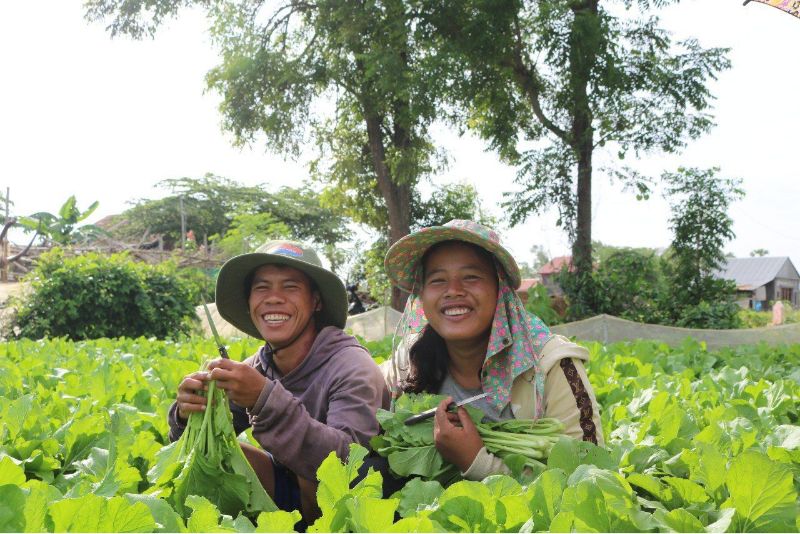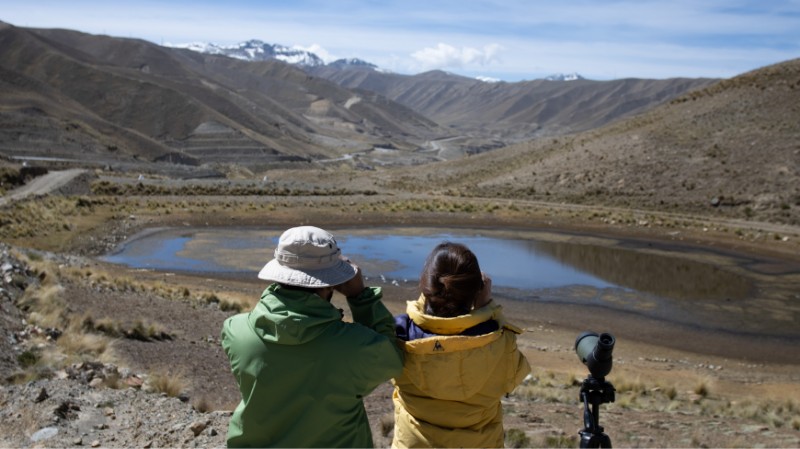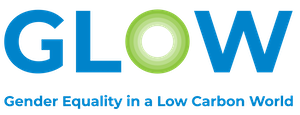Conclusions from GLOW’s research
The GLOW programme’s findings and recommendations for action can inform the decisions and practices of women workers and entrepreneurs, women’s groups and community leaders. They can shape national policies and investments, as well as policy implementation. They are relevant to the broader landscape of international development partnerships and climate finance flows.
GLOW’s findings may inspire and guide local and national stakeholders as they work to update and increase the ambition of the Nationally Determined Contributions to ‘Version 3.0’. Intended to be the most ambitious since NDCs were first launched in 2015, NDC 3.0 has the potential to centre gender and social equity convincingly and integrally in climate action for those countries that have only made tentative steps in this direction.
GLOW’s findings are also of immediate relevance and applicability to the UNFCCC’s Just Transition Work Programme and the related UNFCCC workstream on the ‘impact of the implementation response measures’ (i.e. the impact of implementing climate change mitigation actions) on people’s socioeconomic wellbeing. Beyond this, they are relevant to large cross-cutting areas of the Sustainable Development Goals and their targets.
GLOW’s research sends a clear and categorical message to these actors and processes that progress on gender equality and climate action go together. Action for gender equality, the climate, and society’s response to climate risks and impacts must be intentionally designed and implemented in synergy.
The effectiveness and sustainability of climate action depends on empowering women in multiple dimensions. Progressing gender equality depends on enhancing women’s resilience to climate and other shocks and stresses. Advancing gender equality calls for targeted and appropriate support to women to access the opportunities and benefits of economic transitions to net zero.
Many of the ingredients for women’s economic empowerment in the context of low-carbon, climate-resilient transitions are well-established sustainable development principles recognised in Agenda 2030, although inconsistently applied. The key lesson for climate policy-makers, programme managers and implementers is that they cannot afford to overlook these fundamentals of fair, equitable and effective development in the climate arena:
Women need to be propelled into equal and meaningful roles in the decision-making and leadership of climate initiatives, not merely take up roles as participants. Women’s leadership makes a decisive contribution to the better quality and viability of climate initiatives.
Not only climate policies but relevant sectoral policies such as land restoration, environmental protection, agriculture, blue economy and tourism, should seek to empower women. Gender equality legislation is incompletely integrated into many of the policies, strategies and investment vehicles through which low-carbon, climate-resilient actions are achieved in practice. Significant work is needed in some countries to align and integrate gender and social equity adequately in these sectoral instruments as well as, naturally, to ensure their adequate enforcement and implementation.
Targeted operational measures are needed to create equitable benefits and outcomes for women. The operational design and, critically, the budgeting of climate initiatives must include targeted support measures to enable women’s participation and benefit on an equitable basis with men. Climate initiatives must also take an intersectional lens to analyse barriers for specific disadvantaged groups (such as women living with disabilities) and provide tailored, well-resourced interventions for their benefit.
The programme has also yielded further, novel insights, which merit particular attention for funding, testing, researching and learning in different contexts and to inform impact at scale:

Cambodian farmers (c) World Vision International
Low-carbon, climate-resilient technologies and production models have the potential to relieve menial work typically undertaken by women in the natural resource sectors studied. The research has highlighted how the introduction of low-carbon and climate-resilient technologies and production practices such as solar-powered irrigation (Senegal, Guinea) and regenerative agriculture can (depending on the practice and the context, such as Bolivia) stabilise production or support women’s entry into higher-value activities while reducing the drudgery of underproductive manual labour and freeing time for other pursuits.
Land-sparing and regenerative modes of agriculture, aquaculture and forestry, enable women’s economic empowerment. There is potential for low-carbon, climate-resilient technologies to change entire production models to be lucrative and sustainable for women workers and entrepreneurs and to lighten their need for upfront assets such as land and finance, which women often lack disproportionately. An example is black soldier fly farming, which has a small physical footprint but can turn organic waste into multiple eco-friendly, profit-generating composts and livestock feed.
Women’s economic empowerment in low-carbon, climate-resilient transitions calls for several types of capacity strengthening for women – technical, financial and psychosocial. Climate initiatives should target access for women, as well as men, to weather and climate information and skill-building in climate-related technology and practices. They also typically need to target women workers and entrepreneurs with financial literacy and business management skills (as relevant) to enable them to prosper in producing and marketing low-carbon, climate-resilient goods and services. Climate initiatives may consider varied, locally-appropriate measures to support women’s confidence, as a way of addressing internal psychosocial barriers born of societal biases. They can equip women with advocacy and negotiation skills to be more effective climate leaders.
Appointing and encouraging gender champions including allyship with men is critical to climate initiatives that deliver for all of society. Climate initiatives have a significant opportunity to nurture allies and champions for gender issues and the positioning of women as climate leaders. This report has outlined many forms of facilitated and deliberative dialogue at nested levels from household to community to national level to frame and enact these positive norms around the empowerment of women and disadvantaged social and socioeconomic groups. Such measures are typically overlooked in climate programmes but must be understood as an integral part of capacity strengthening and effectiveness.
Monitoring, evaluation and learning systems must account for the likelihood that women and diverse groups in society value a range of intangible as well as tangible benefits arising from climate interventions. Tangible benefits include increased income and economic assets, and increased resilience such as the ability to anticipate, absorb and recover from climate or other shocks and stresses as measured by minimal interruption of production and consumption activities and related wellbeing. Intangible benefits include increased rest time and participation in valued social and cultural activities as a result of applying low-carbon and climate-smart measures.

Leaders of scientific tourism ventures, Bolivia (c) SDSN Bolivia
Frontiers for new research
The GLOW programme has opened frontiers for new research, as follows:
The intersection of ecosystem integrity (including biodiversity), gender equality and climate action.
GLOW projects in Bolivia (quinoa production by Indigenous women) and Nepal (women-led forest solutions) looked at the extent of and potential for agrobiodiversity 1 as part of their baseline analyses. The Nepali project Economic empowerment of women through forest solutions further worked with community forestry user groups and district authorities to extend local bylaws. The new bylaws provide for the monitoring and sustainable management of diverse tree species that women require for their non-timber forest product enterprises.
There is far greater potential for action research across diverse landscapes that frames, tests and draws conclusions on the simultaneous potential for women’s economic empowerment, climate action and ecosystem and biodiversity restoration. This could look particularly at the restoration of species of conservation concern more broadly (such as beyond crops and livestock diversity to stabilising and restoring the far greater diversity of species in the surrounding biome, and the ecosystem services they deliver) and how this can happen outside nature conservation areas in productive landscapes.
Greater scientific and policy understanding is needed on how well-designed initiatives can target these intersections of climate, nature, and people and yield multiple benefits, which can be adequately measured over time – including through biodiversity monitoring.
Action research at this nexus would advance global assessments and future decision-making across the Global Biodiversity Framework (especially its Target 1: Plan and manage all areas to reduce biodiversity loss, and Target 2: Restore 30% of all degraded ecosystems), Agenda 2030 and the Paris Agreement. What the Bolivia quinoa project and Nepal forest enterprise project have in common is that they are inspired and led by Indigenous women. It is already recognised in the work of the Intergovernmental Science-Policy Platform on Biodiversity and Ecosystem Services (IPBES) and the IPCC that Indigenous-managed lands have greater biodiversity and ecosystem integrity. Research co-developed and co-documented with Indigenous communities on their knowledge and practice, and implications for policy, would be particularly valuable.
Characteristics of social protection delivery for the most marginalised women in the context of low-carbon, climate-resilient transitions.
The GLOW projects discovered a stratification among women in terms of their abilities to take up low-carbon, climate-resilient technologies, production systems and value chain activities. Even in those communities that seemed superficially to be relatively homogenous in terms of wealth levels or ethnicity, researchers found significant variety in women’s participation.
There are further variables that intersect with gender and act as compounding barriers to entry into decent, low-carbon and climate-resilient livelihoods. While the GLOW research and this synthesis report highlight as much as possible the intersectional analysis undertaken in the 17 study locations, GLOW project teams universally highlighted that more research is needed. Of foremost concern is how women and female-headed households in extreme poverty – in destitution – can and should be supported to lead dignified lives that are climate-resilient and future-proofed (recognising that their emissions profile is essentially nil). Other avenues for enquiry raised in the GLOW research relate to how such intersecting factors as gender and marital status and age block or enable entry to low-carbon, climate-resilient livelihoods. There is a need to build on the World Bank’s Shock Waves report and contributing papers (2015-16) on the interactions between climate change and poverty, to interrogate the relationships between climate, extreme poverty and green economic transitions from gendered and intersectional perspectives.
Further research should look deeper into what economic and sociocultural factors leave certain segments of the women’s population behind in green transitions, and how social protection instruments and other targeted measures could include these diverse sub-groups of women more successfully. This could include the prospect of graduation into a more secure economic status and decent work that is low-carbon and climate-resilient (where their age, health, physical and psychological ability enables them to work).
Mapping and monitoring existing finance flows to locally-led women’s climate initiatives and using this analysis to leverage and unlock appropriate flows.
The women-led initiatives described in the GLOW studies were financed from a combination of sources. Some of the activities received catalytic funding from Canada’s International Development Research Centre (IDRC) via the GLOW action research projects themselves. Others were self-funded (as with the direct household purchases of solar power irrigation systems in Senegal) or subsidised or directly provided by publicly and philanthropically funded donor projects (again in Senegal). Some activities relied on village savings and loans association models, where participants pooled their own resources and defined their own rules.
There is significant demand in global and regional public policy forums and in the context of defining national climate plans and strategies, to understand the extent of needs for climate change mitigation and adaptation finance and cross-cutting finance (across mitigation and adaptation).
Public policy-makers and investors wish to know the quantum and quality of the supply and demand of climate finance (how much climate finance is flowing, from whom, to which countries, sectors, themes, activities, subgroups of the population, with what degree of concessionality and for what types of activities and timeframes). There is a years-long history of negotiation and analysis in the UNFCCC and its constituted bodies, such as the Standing Committee on Finance and its Biennial Assessments of climate finance and Determination of the needs of developing country Parties assessments, to better map and monitor this complex landscape.
The methodologies for tracking the climate finance flows and ascertaining the match of supply to demand are being developed iteratively but are still widely viewed as insufficient. There is a strong need for more bottom-up research and pilot testing from the perspective of women-led, local climate initiatives to define needs and develop more people-centred methods for measuring and tracking the adequacy of external support. The conception and testing of new methods could be undertaken in diverse locations and eventually developed into a more widely used methodology, based on sampling, to inform national, regional and global understanding and investment.
